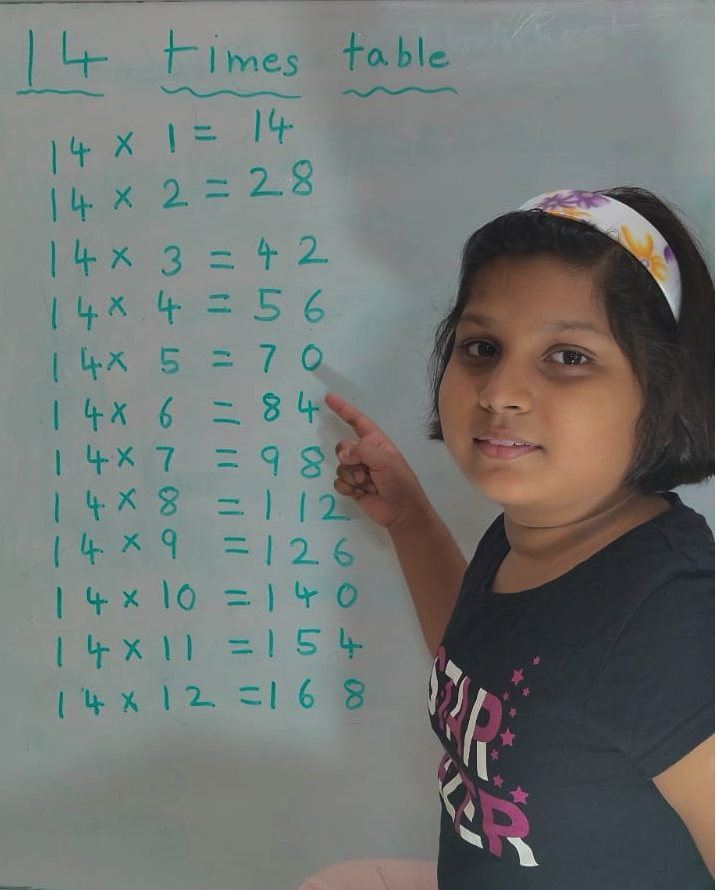Cumulative Frequency
Here we will learn cumulative frequency.
The cumulative frequency of a value of a variable is the number of values in the collection of data less than or equal to the value of the variable.
For example: Let the raw data be 2, 10, 18, 25, 15, 16, 15, 3, 27, 17, 15, 16. The cumulative frequency of 15 = 6 (Since, values ≤ 15 are 2, 10, 15, 15, 3, 15).
The cumulative frequency of a class interval (overlapping or nonoverlapping) is the sum of the frequencies of earlier class intervals and the concerned class interval.
For example: Consider the frequency distribution below.
Class Interval
0 - 20
20 - 40
40 - 60
60 - 80
80 - 100
Total
Frequency
4
7
2
5
3
21
The cumulative frequency of 0 – 20 is 4, of 20 – 40 is 11 (i.e., 4 + 7), of 40 – 60 is 13(i.e., 4 + 7 + 2), etc.
The following cumulative frequency table can be constructed from the above frequency table.
|
Class Interval 0 - 20 20 - 40 40 - 60 60 - 80 80 - 100 |
Frequency 4 7 2 5 3 |
Cumulative Frequency 4 11 13 18 21 |
(= 4 + 7) (= 4 + 7 + 2) (= 4 + 7 + 2 + 5) (= 4 + 7 + 2 + 5 + 3) |
Another way of representing the same table is shown below.
Value of the Variable
Under 20
Under 40
Under 60
Under 80
Under 100
Frequency
4
11
13
18
21
Here the class interval 0 – 20 has the frequency 4. The class interval 20 – 40 includes those values of the variable which are under 40 but not under 20. So, the frequency of the class interval 20 – 40 is 11 – 4, that is 7. Clearly, such a table is in fact a cumulative frequency table for overlapping class intervals.
Solved Examples on Cumulative Frequency Table:
1. For the collection of numbers 12, 15, 8, 13, 12, 15, 9, 16, 24, 20, 20, 16 and 10, answer the following:
(i) What is the cumulative frequency of 16?
(ii) If 15 - 20 be an overlapping class interval when the numbers are grouped, find the cumulative frequency of the class interval.
(iii) If 15 - 20 be a nonoverlapping class interval when the numbers are grouped, find the cumulative frequency of the class interval.
Solution:
(i) 10 (Since values ≤ 16 are 12, 15, 8, 13, 12, 15, 9, 16, 16, 10)
(ii) 10 (Since values < 20 are 12, 15, 8, 13, 12, 15, 9, 16, 16, 10)
(iii) 12 (Since values ≤ 20 are 12, 15, 8, 13, 12, 15, 9, 16, 16, 10)
2. The marks of 200 students in a test were recorded and shown by the following frequency distribution.
|
Marks % 10 - 19 20 - 29 30 - 39 40 - 49 50 - 59 60 - 69 70 - 79 80 - 89 |
Number of Students 7 11 20 46 57 37 15 7 |
Construct the cumulative frequency table.
Also answer the following.
(i) How many students obtained less than 50 marks?
(ii) How many students obtained at least 60 marks?
Solution:
The cumulative frequency table is as given below.
Class Interval
10 - 19
20 - 29
30 - 39
40 - 49
50 - 59
60 - 69
70 - 79
80 - 89
Frequency
7
11
20
46
57
37
15
7
Cumulative Frequency
7
18
38
84
141
178
193
200
(i) The number of students obtaining less than 50 marks
= the cumulative frequency of the class interval 40 - 49 = 84.
(ii) The number of students obtaining at least 60 marks
= total number of students - the number of students getting less than or equal to 59
= 200 - 141
= 59.
Alternative method
The number of students obtaining at least 60 marks
= Sum of the frequencies of the class intervals 60 - 69, 70 - 79 and 80 - 89
= 37 + 15 + 7
= 59.
From Cumulative Frequency to HOME PAGE
Didn't find what you were looking for? Or want to know more information about Math Only Math. Use this Google Search to find what you need.
Recent Articles
-
Vertical Subtraction | Examples | Word Problems| Video |Column Method
Mar 22, 25 05:20 PM
Vertical subtraction of 1-digit number are done by arranging the numbers column wise i.e., one number under the other number. How to subtract 1-digit number vertically? -
Worksheet on 11 Times Table | Printable Multiplication Table | Video
Mar 22, 25 05:08 PM
Worksheet on 11 times table can be printed out. Homeschoolers can also use these multiplication table sheets to practice at home. -
Worksheet on 10 Times Table | Printable Multiplication Table | Video
Mar 21, 25 03:46 PM
Worksheet on 10 times table can be printed out. Homeschoolers can also use these multiplication table sheets to practice at home. -
5th Grade Prime and Composite Numbers | Definitions | Examples | Math
Mar 21, 25 12:18 AM
5th grade prime and composite numbers -
14 Times Table | Read and Write Multiplication Table of 14| Video
Mar 20, 25 04:03 PM
In 14 times table we will learn how to read and write multiplication table of 14. We read fourteen times table as:One time fourteen is 14 Two times fourteen are 28 Three times fourteen are 42





New! Comments
Have your say about what you just read! Leave me a comment in the box below. Ask a Question or Answer a Question.